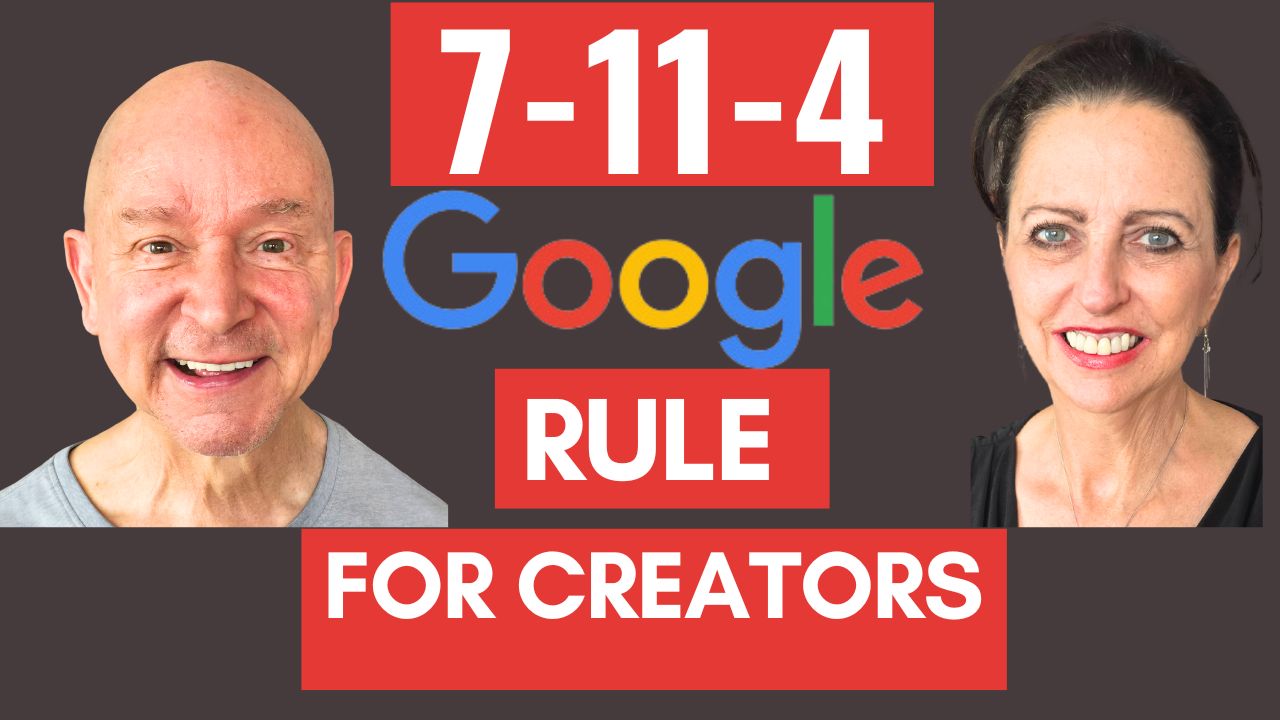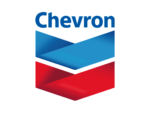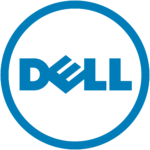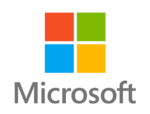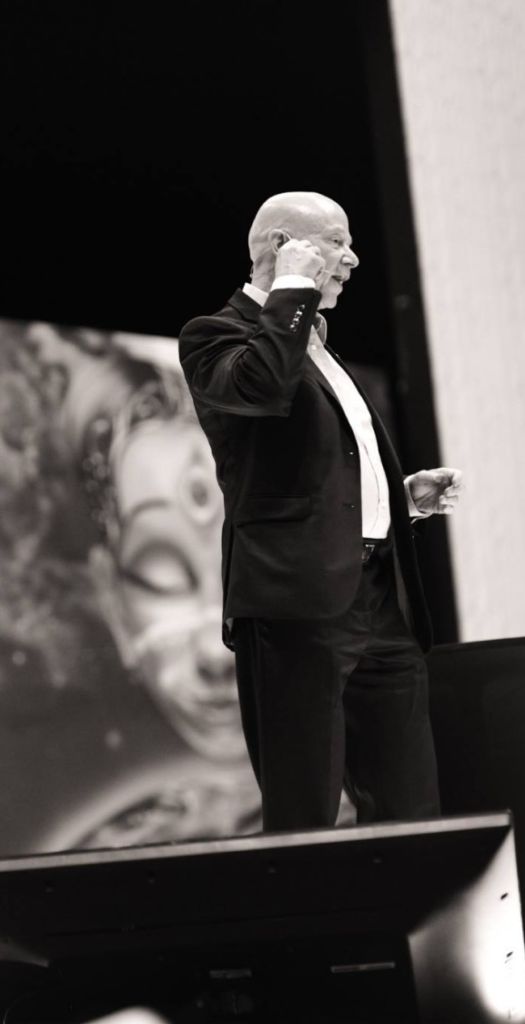In today’s episode, hosts Gina Carr and I break down Google’s 7-11-4 rule—a powerful framework that’s reshaping the world of relationship marketing and AI.
Learn how this rule, which emphasizes 7 hours of interaction, 11 touchpoints, and 4 platforms, can help you convert content into cash and build stronger connections with your prospects.
From leveraging diverse forms of high-quality content to employing cutting-edge AI tools like Cast Magic and OpusClip, we share actionable insights to help you stand out in a crowded digital landscape.
Join us to discover how understanding and implementing the 7-11-4 rule can transform your marketing efforts and drive meaningful engagement with your audience.
First, here’s a gift for you to better understand AI and build sales –
Recommended AI tools for business growth.
http://AItools4biz.com
Here’s a link to the video:
Listen to this & other episodes on our podcast
https://bit.ly/sre_podcast
Here are some timestamps that can be useful for you:
[00:00:00] Introduction to Google’s 7-11-4 Rule:
Terry Brock introduces the concept of Google’s 7-11-4 rule and its relevance to relationship marketing and AI.
[00:00:30] Explanation of ZMOT and 7-11-4 Rule:
Gina Carr explains Google’s ZMOT (Zero Moment of Truth) and breaks down the 7-11-4 rule for marketers.
[00:02:05] Breakdown of the “7” in 7-11-4 Rule:
Terry Brock details what the “7” stands for: seven hours of content consumption across various formats.
[00:02:23] The “11” in 7-11-4 Rule – Eleven Touch Points:
Gina Carr elaborates on the importance of eleven different touch points, such as social media interactions, emails, and website visits.
[00:03:05] The “4” in 7-11-4 Rule – Four Platforms:
Terry Brock explains the significance of being present on four platforms where your audience is most active.
[00:09:00] Using AI to Personalize and Repurpose Content:
Terry Brock discusses tools like Cast Magic for repurposing content to fit the 7-11-4 strategy effectively.
[00:16:57] Importance of Relevant Content and Relationship Building:
Terry Brock emphasizes the need for creating highly relevant and customized content to build strong customer relationships.
These timestamps should give your listeners a comprehensive understanding of the key points discussed in the episode.
__________________________________________________
For your convenience, here’s a transcription of this episode:
Terry Brock:
In marketing, there’s a very important term that’s making its way around the net right now about Google’s 7, 11, 4 rule. And we think, what in the world is that? Well, it relates a lot to relationship marketing and AI as well and how you can put those together. And that’s what we’re gonna talk about here on this episode of Stark Raving Entrepreneurs. Got some good things for you. I’m joined by my partner, Gina Carr, who’s gonna tell us a little bit about this. Gina, what in the world is this 7, 114 thing that they’re talking about as a rule from Google?
Gina Carr:
Well, it’s a realization that Google had years ago, a while back anyway, and and they are sharing it with the world so that people know that there’s what they call the zmot, the zero moment of truth. And it’s in the zero moment of truth that people, your prospects, people who are considering doing business with you are learning about you. So they’ve learned about you and the problem that you solve, and now they’re getting educated. They’re getting to know you. They’re trying to figure out if your solution’s right for them, if your personality is right for them. And so they have coined this term, the ZMOT, the zero moment of truth, and then they have determined based on their analytics that there’s 7, 11, and 4 rule the 7, 11, 4 rule is what will help marketers to evaluate, what they’re if what they’re doing is enough so that they can bring prospects on board as a client.
Terry Brock:
Yeah. I like this as we look at it because it brings in a lot of the elements that we talk about here at Star Craving Entrepreneurs about, using AI, of course, as tools to find it out, but then also relationship marketing where you’re using this to really build the content that converts to cash. Content to cash is a real big thing. So the 7 stands for 7 hours that people are gonna be able to see you. They get used to seeing your material. That might be 7 hours of video or usually, it’s a combination, a little bit of podcasting. Maybe they’re reading some of your materials on LinkedIn or Facebook or TikTok, wherever it would be. A total of about 7 hours.
Terry Brock:
And, of course, all these numbers are approximate. It’s not like it must be a 7, 11, and 4. And if you deviate from it, you’re wrong. No. It’s a matter of okay. Usually, it takes around this many hours. And then, Gina, we get over to the 11 number. What does that 11 stand for?
Gina Carr:
The 11 is 11 different touch points. So this can be that they visited your website or that they’ve interacted with you on social media, that they’ve gotten an email from you, that they saw you in person. So touch points is what the 11 stands for.
Terry Brock:
Okay. And then the 4 is for platforms. So it’s saying, okay. We’ve got 4 platforms that you’re going to be on. They recommend 4, and, those 4 will depend on you and your audience of what you want. For us, we often use YouTube a lot. That is our primary source that we go to only for because it works for us as thought leaders. By YouTube, we can get the video, obviously.
Terry Brock:
We also get the audio for a podcast. We can also get enough visuals and graphics to use them in different places on LinkedIn, which we use a lot. We’ll use it on x. We’ll use it in different areas and then send that out through email as well. So those 711 Ford numbers really matter, and it matters a lot in how we’re buying today using those digital points. What it could be could be in many different areas. And the 11 points that we’re talking about are really going to be different ways. They can be, for instance, in digital or a physical condition, or I should say well, it might be a condition.
Terry Brock:
It’s actually a connection. Is there you’re making a connection with folks, and they’re hearing about it. And so tell us a little bit about that, Gina, and what you see are the the digital physical connections and some of the other areas of that.
Gina Carr:
Well, I think it’s important to to know that you’re you’re gonna do best if you are creating some diverse, high quality content that people are consuming. And this is part of building relationships as as you talk about a lot, business relationships. And you want to ensure that you have a consistent presence across platforms. So you want to be sure that your brand and that you are being represented consistently. A way to do that is to develop a content calendar that that can help you a lot. And then let’s say that you create 1 pillar piece of content per week, such as a YouTube video, as we’re doing right now. And then from that video, you repurpose it into additional pieces of content, smaller videos or text, pieces or images or audio. Of course, we’re gonna take this one and turn it into a podcast, and we’re gonna turn it into a number of other pieces of content.
Gina Carr:
So that’s how you are able to really increase the amount of touch points that you’re gonna have when you’re interacting with your prospects.
Terry Brock:
Yeah. I think that’s very important. And, Gina, as you know, here at Start Raving Entrepreneurs, we like to talk about number of different AI platforms that can help you with that. One of my favorites is Cast Magic. Cast Magic gives you the ability to take something that you have like an interview and to carve it up into different pieces. So it can give you titles. It can give you the, stories that you might need. It’ll give you an introduction, a LinkedIn post if you want.
Terry Brock:
It’ll give you threads for x. It can give you Instagram reels, all of that repurposed. And that’s all part of that 7, 114 that Google talks about so that you’re reaching people in a major way, making sure that you’re connecting with them in a way that they go, hey. I like this. I like what she’s saying. She writes some good material here. Oh, he’s got some good stuff over on this. So you want all that to be there.
Terry Brock:
But also a lot of this relates to the way that people used to buy. As we were preparing for this, Gina, you were telling me some of the ways they worked, that you worked before when you were growing up, I think going to school and before you got into, undergrad school, of what you did and the way you buy. Tell us a little bit about that and how that related to and still relates to today, the 7114 idea.
Gina Carr:
Well, if you think about it, in the in the old days, the pre Internet days, how did you make your purchasing decision? And it reminded me of when I was in I think it was just in junior high. Might have been high school, but junior high, high school back in Atlanta, Georgia, I worked at a little dress shop in a shopping center. And so people would drive by, maybe their friends would tell them, oh, you gotta go check out, this little dress shop. And we we had custom items, things that you wouldn’t find in the big department stores. And so we had a good reputation. The, staff, including me maybe, were were considered friendly and helpful, and we would certainly keep files on people in a good way such as, oh, we know that miss Smith really loves this sort of fancy dress. And if we get some of these fancy dresses coming in, then we know that we need to contact missus Smith.
Terry Brock:
Yeah. I think this way, we keep track of it and able to really personalize what you’re talking about, and I think that’s really good. It’s real still based on what we talk about, the know, like, and trust. Back then, long, long ago, whenever long, long ago would be for you watching this or listening to this, You know that you have to build that relationship with somebody. You get to know them. Then you like them a lot, and then you trust them before you’re gonna do business with them. And, really, what we’re doing there is we’re talking about what I like to call you eyes. You’re you izing your content, talking about you to help them really customize it.
Terry Brock:
This is something that is imperative to make sure that you’re getting close to the customers. I’ve come up with a term you eyes. But, Gina, you seem to like that, and we’re finding a lot of people seem to like it. What is it that you like about that term, UIs, and what it means?
Gina Carr:
Well, it’s certainly a way to put your own personality and your stories and your insights into the work that you’re doing. Nowadays, people are smartly using AI to generate part of their content, but you don’t want a lot of, just blander that’s soulless and personalityless out on the Internet and with the content that you’re creating for yourself. So you want to put yourself into it. And one of the ways that I’ve helped people do that is I walk people through what I call the memory lane exercise, and that’s where I prompt them to look back at their history and think of stories that they could interject into their their content today and lessons that can be learned. So it’s really, a great way to combine your concept of UIs with my memory lane concept and put together customized special content that converts to cash, which is a lot of what we talk about in our programs, content to cash.
Terry Brock:
And that’s gonna be really important because what you wanna do is you wanna make sure that you bring that into play so that you’re it. In other words, you’re personalizing it, and that helps you to stand out from the AI. A lot of times now with AI, people say, oh, it just is AI written. And, yeah, we can tell. But the AI doesn’t know about what you did at that seminar last March, where you heard a speaker and she was really good about this and this topic. You put that in there and talk about it in the way you reflected on it, or the experience you had when you were in 3rd grade that relates to this, idea here. Those are the ways that we really get ahead. And so we’re doing that, and then we couple that.
Terry Brock:
A part of the 7 is the 7 hours of interaction. Gina, when I first heard that, I thought, that’s an awful long time, which means it could take a lot of different exposures. Tell us what your thoughts are on the 7 hours of interaction that Google is recommending.
Gina Carr:
Well, it’s good to have, content out there, to have video short even if you have short videos, have a lot of them so so that somebody can really figure out whether they, mesh with you or not, whether they are grokking with you, so to speak, and, like your personality, like the way that you teach, like what you have to say, like your sense of humor or or lack thereof. And so that’s part of it. So the 7 hours does not have to be video, although video, I think, is the most compelling and the the best content, the best converting content. You could also have a lot of written material. You certainly, in some fields, images are very important. So just some way for the clients to get to know you and, 7 hours 7 hours worth.
Terry Brock:
Yeah. I
Gina Carr:
mean hours worth out there.
Terry Brock:
Well, I think that would be really good, 7 hours. And that can be in different ways too because it might not all be in video. It might be part of that is they saw you in a seminar live in person. It also might be they enjoyed your podcast, so they listened to a little bit of that. And they read that article that you had that took them a while to read it. So all of that together really comes out to doing a lot, and having a lot of variety on that is good. Making sure you’ve got a a variety of different types of forms as well as long form video can be good so that you have that. That takes up some more time.
Terry Brock:
But I think the most important thing is gonna be frequent interactions. Tell me a little bit about that, Gina, where you see the different kinds of interactions that people have from YouTube Shorts and more.
Gina Carr:
Well, YouTube Shorts are fantastic. One of the tools that we use for that, OpusClip. You can find it at opus.pro. So that’s one of the one of the interactions, one of the ways. Certainly using different social posts, having training sessions, that are either open to the public or that are inside a private group. We do a lot of that in our community. And then just creating and a great example is creating YouTube videos like this and asking people to interact. So I’d like to ask you, dear viewer, put it down in the comments below.
Gina Carr:
How are you engaging with your people? How are you building this 711 4 rule? How are you going to use that in your business as you are interacting with your clients?
Terry Brock:
Okay. And I think those are really good. And, Jane, I wanna ask you a question here. They talk about the 11. That’s 11 touch points, different ways that you reach someone in different ways. There’s many ways that you can positively interact with prospects and customers and those kind of things. Tell us about some of those that you see have worked most effectively with clients that you and I have worked with.
Gina Carr:
Well, what I’ve seen most effective is leading people to interactive virtual events. I love, hosting workshops, webinars, master classes, and teaching there. And from teaching there, I get a lot of questions, and I get a lot of inquiries from people who want to know how they can do business with me or with us or join our community so that they can get to know us better. And, I know you’ve had a lot of success recently with, email marketing that you’re doing. You’re doing some very personalized, very effective emails, and so so that’s important. You can, the in person events, you and I just returned from a big in person event or going to another one next week, Those are great ways to have additional interactions with people for those touch points.
Terry Brock:
Yeah. Exactly. I think there’s a lot of good things there. And then also we noticed that we’re gonna be doing a lot with many other forms of, connection with people. One that I like a lot is Loom. Loom gives you the ability to create those customized videos that you can send to someone and then send them through email. That’s really good. And another way that I like to look at is using LinkedIn.
Terry Brock:
LinkedIn audio, I think there’s something about LinkedIn audio. People gotta listen to it. You know? How can you get how could you omit that? If somebody gives you an audio on LinkedIn, you gotta listen to the thing, and that’s good. Make sure that it’s relevant and don’t and keep it short too. But that’s a great way to look at it to see what can be done and how you do it. Because, you know, when we get down to it right now, Gina, you might have heard about this. One of the things I looked it up and I did some study here. Right now, we’re seeing a lot of competition out there.
Terry Brock:
And so you’ve gotta stand out in a real prominent way. There are 500 hours of video uploaded every minute of the day. 500 hours. 3 30000 hours of video uploaded per hour, and here we go, 720,000 hours of video uploaded per day. So it’s no way that anyone can listen to that. So what happens is we get swapped with it. So you can’t do it all, but you wanna look at those 4. Now so we’ve talked about the 7 and the 11.
Terry Brock:
Now we come up to the 4, the 4 platforms that are there. Gina, what are your thoughts on those 4 platforms, what you would recommend, and why would you recommend them?
Gina Carr:
Well, I think you need to choose the platforms that you’re gonna be most comfortable with and the ones where you believe that your people are gonna be most receptive. So that can include social media channels. It certainly can include your website or websites, your emails, your physical events, or your virtual events. Regarding social media, one of the ones that I like best that we haven’t talked about yet is the LinkedIn newsletter. So this is a special feature of LinkedIn that allows you to create a newsletter, essentially, it’s like your own newspaper. And every time you post to the newsletter, it sends a notice directly to the email of the person who subscribed. And because LinkedIn is really supporting this feature, it’s promoting and and helping you get a lot of subscribers very quickly. So I that’s a feature that we’ve been teaching for a while, our clients are loving, and we’re loving as well.
Terry Brock:
Yeah. I think there’s a lot of platforms there that we can use, and those kind of tools are good. So be bear in mind, what you wanna do is you wanna have the right kind of platform, get your message out, and make sure that you’re doing something that is answering a specific question. Because there’s so much information out there, the 720,000 plus videos uploaded every hour, you wanna make sure that yours answers a specific question. Because if you think about it, if your expertise is on well, let’s say ours is AI, which is what it is. We look at AI, particularly how you can turn content into cash using AI and build relationship marketing. Those are our real narrow. Now there’s a lot of other areas even within AI that you can focus on, but you want to answer those specific questions and become the subject matter expert in a particular area.
Terry Brock:
Because we’re so much out there, well, that’s good that people can get all those answers, but also you wanna focus in on what’s gonna be important. As an example, one that I did recently, I was doing a program as a professional speaker. I go out and speak to a lot of different places, and I was speaking for the big annual meeting for about, oh, there were about 10,000 people there at this, event. And I got a chance to talk with them about what was going on in their industry. And so what I did is I went and did a search on Perplexity, one of my favorite AI tools, and I told them, here is what is going on in the next 6 months that your customers want to know based on the research and data that we got from 100 of thousands of robots going out, checking different data points on what your customers like and want more of. Would that be of interest to you? And, of course, they said, yes. Of course. We wanted that.
Terry Brock:
And so I put it all into a Google Doc that I shared with them. So they had this way before it was going. I was in a June presentation, and and so they were interested in what’s gonna work in the second half of the year. So I put it together that way, and it worked really nicely. So this is something you can do in a major way, making sure that it’s customized. Another one I did recently, I was working for a group in one industry where they had certain challenges. I got in, studied that industry as I like to customize these presentations. And on the day that I was supposed to speak was a Tuesday.
Terry Brock:
The day before that, Monday afternoon, there was a major announcement from OpenAI about chat gpt. Big thing that happened and changed a lot and changed it for their industry. So what I did is I went in there and changed my presentation. I put together all the slides, omitted a bunch of them, brought in some new things, created some new ones to say, here’s what they announced yesterday and what you can use here in your industry. Well, they were flabbergasted. They were like, this is great. You know, we can use it because it was exactly what they need. And the whole point is you wanna make sure that it’s highly relevant to the people that you’re talking to.
Terry Brock:
Make sure that they are working with you, and you understand that. Gina, I know you’ve done that as well sometimes when you customize programs, when you’re talking to someone. Have you seen that that’s something that audiences look to and something that ties in with the 7, 11, 4 strategy?
Gina Carr:
Well, certainly, it does. And as we are presenting and sharing ideas, sharing our insights, and sharing tools and ways for people to reach their own customers and grow their business, which is what we’re focused on, That’s been, that’s been a big part of what we do. Absolutely.
Terry Brock:
Yeah. I think there’s a lot there. And so what you’d wanna do in that case, for instance, those two cases there, I was working with a speaker’s bureau. They’ve known me for decades, literally. I’ve worked with them a lot. So when their client their client said, who is someone that would be good to talk about AI for our industry? Well, they said, well, Terry Brock, of course. So we are able to help them on that. And this is all the key.
Terry Brock:
It’s about building relationships, all about getting to know people, those seven hours of contact they have minimum, then the 11 touch points. And I would say you want those to be going on on a regular basis. So you see, what it really comes down to is 7114 involves relationships. It’s about relationships, anticipating what they’re gonna need. And, again, this is not the exact number. It’s not like you must do it 7 hours exactly. No. Sometimes it might be a little less.
Terry Brock:
Sometimes it might be more. Like when my, speakers bureaus that I work with talk to their clients, they don’t take 7 hours to say, we you need Terry Brock. They go, hey. Terry would be perfect for this one right here. Now if you wanna talk about team building or something, that’s not Terry. Okay. We got some others who do that. But you want this on AI, relationships mark relationship marketing, the latest tools and what you can use.
Terry Brock:
Terry Brock’s the guy for you. And so the their client listened to that and said, okay. We’re gonna go with Terry. And they make the decision. So this is good, and this is how it all works together. You anticipate what’s there, and you start looking forward to that. So, Gina, there’s a lot involved in this. I see there’s a lot going on there.
Terry Brock:
Anything that, you want I know you had mentioned some things about the the others are doing this on, building the long term relationship, something with Gary Vaynerchuk. As we were putting this together, what were your thoughts on how Gary v is bringing this in so well?
Gina Carr:
Well, when I think about someone who is doing a great job of creating a lot of content that people can consume. Gary v is the poster child for that, and I was, just listening to some updates from him. I believe his team is maybe 20 people, and I think his goal is to put out a 100 pieces original pieces of content every day. And even with even with a team of 20, he says he feels like he’s not doing enough. So it it can be overwhelming, but if you just start working on content, working on creating content out of things you’re doing already so it doesn’t have to be in the silo of go create some content. It’s film yourself doing things that you’re already doing or take excerpts from trainings that you’re already creating. Or as soon as you get off the phone with a client or thinking about something, just write some notes, make some posts about it, and it can all come to life. So just just make it a regular part of what you’re doing.
Terry Brock:
I think you’re right. I like the way you say that, Gina. Make it a regular part of what you’re doing. And so that’s what we’re talking about here at Stark Raving Entrepreneurs. Work with this. Make sure that it’s something that we can, see we as customers of yours, how we can use that, how we can work with you, and how we can make sure that things are working in a better way all the time. That’s the real key and what it what matters most when you’re talking about relationship marketing and doing it. And a matter of fact, if you wanna find out more about that, come on over and join us at Stark Raving Entrepreneurs.
Terry Brock:
And be sure and hit that like, share, and subscribe button. That way, you’ll get a chance to know when we got another piece of content for you, and you’ll also be able to tell the algorithms you like the idea of relationship marketing and working with people. And here’s some goodies that we wanna make available to you. Go over to ai tools for biz dotcom. That’s all in lowercase, ai tools, the number 4, biz.com, and we’ll get you some good ideas right there. They’ll tell you about tools like Canva, DALL E 3, chat g p t, and many, many others. And, also, we got something for you here that I wanna share with you, a QR code. They’ll help you get over there to ai tools for biz.com.
Terry Brock:
You just click on that. I know you got your phone with you. You can take a look at that and get some real goodies and some other videos that are waiting for you. Thank you very much for joining us, and this is a part of a movement. It’s a part of helping people to help other people to make the world a better place by using AI, build relationships. Using that Google 7 11 4 technique. I think it’s sound real good. On behalf of Gina Carr and myself, I’m Terry Brock.
Terry Brock:
Thanks for joining us today.

